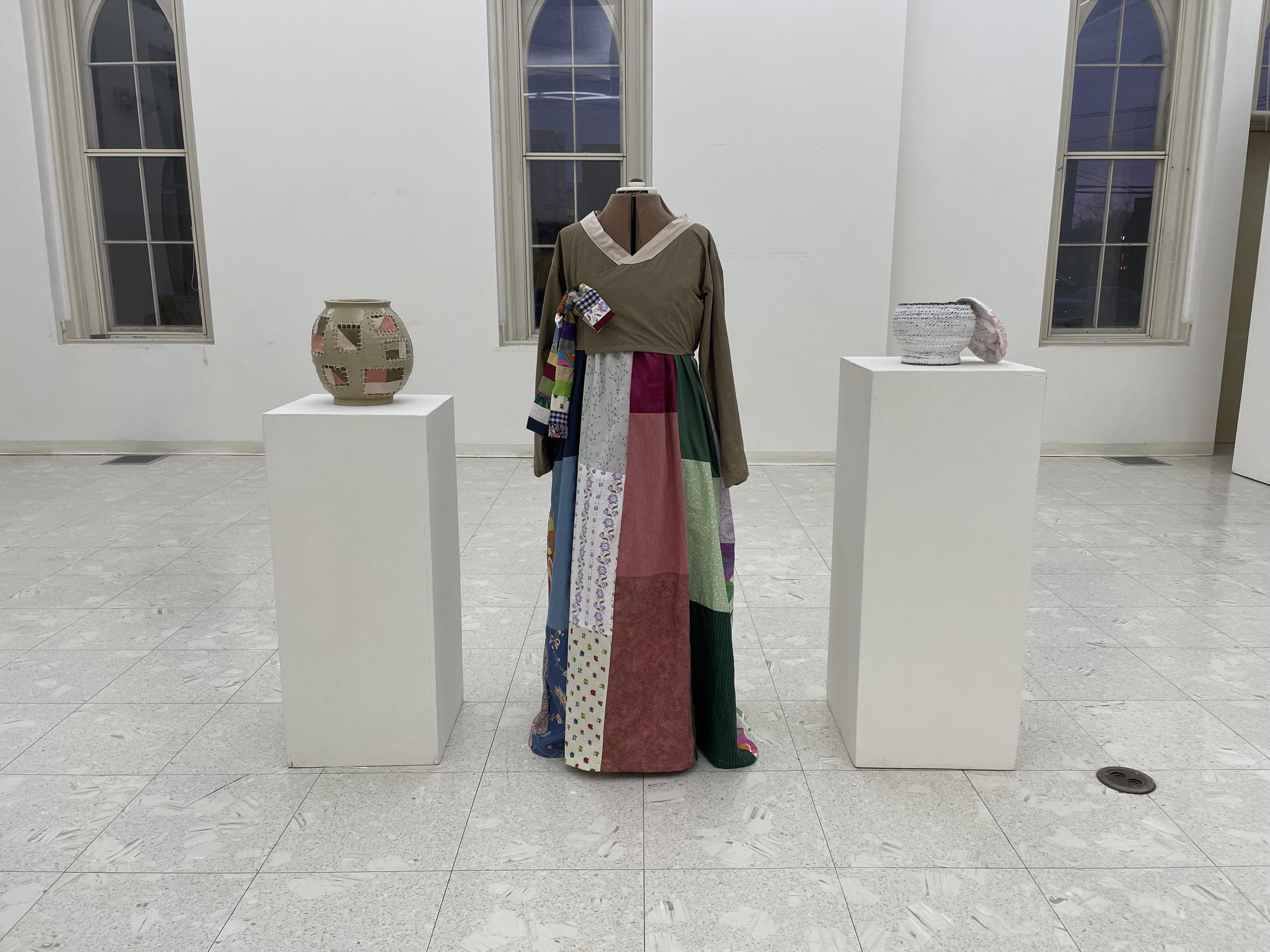Lanie Cheatham ‘24
“The Ornamental Self: Reassembling Korean/American Identity Through Art”
The 2024 Shansi Prize is awarded to Lanie Cheatham ‘24, for her honors capstone project “The Ornamental Self: Reassembling Korean/American Identity Through Art,” nominated by Dr. Carmen Merport Quiñones, Assistant Professor of Comparative American Studies.
Lanie’s project began more than a year ago when she first began thinking deeply about Asian American feminist theory and to imagine a world where “I could be witnessed and recognized as Korean American.” Looking to the art of Korean-American artist Julia Kwon and the writing of theorist Anne Anlin Cheng’s work on ornamentalism, among others, Lanie created three objects—dal-hang-ari (moon jar), jiseung onggi (fermentation vessel), and saekdong joseon-ot (a Korean dress). As Lanie states, in creating “three ‘empty-but-embodied objects’ that force us to encounter ‘our own thingness,’ exploring cultural objects allows me to reclaim a sense of Korean/American identity through an embodied practice of doing. Exploring three different objects with different materials and creation methods, I asked: what can objects tell us about what it means to be human?” Through the intersection of art-making and writing, Lanie’s work challenges the objectification of Korean and Korean American women that explores the multitude of Korean/American experiences through the production of physical objects. Furthermore, Lanie’s project works to unveil how Korean pop culture obscures the history of colonial and imperial violence that still exists within Korea today and the history of violence against Korean people in America.
(From L to R): dal-hang-ari (moon jar), saekdong joseon-ot (Korean dress), and jiseung onggi (fermentation vessel)
Dr. Merport Quiñones notes that “my colleagues and I were deeply impressed by Lanie’s ability to contend with the challenges of extremely complex intellectual and artistic work in her writing, and by the clarity with which she was able to connect her critical reflections to her own artistic creations.” She also notes that the art works that Lanie created are also enormously impressive. “Each of these works engages with a different traditional Korean art form, and each ingeniously uses found materials in ways that exceed custom and convention. These extremely labor-intensive pieces taught Lanie to think about craft, tradition, and expression more expansively, as she writes so movingly in her essay.”



